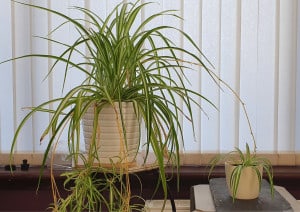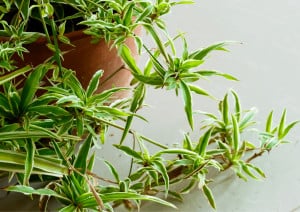3 Ways To Propagate Spider Plant Babies
-
Chris Dosser
- October 14, 2022
If you buy something using the retail links in our articles, sometimes we earn a small affiliate commission. This does not impact the products we recommend.
A classic office plant, Spider plants (Cholorophytum comosum) are prolific when it comes to producing offsets (also known as spider plant babies or spiderettes).
You show a mature spider plant just a little bit of tender loving care and it’s not uncommon to receive offsets containing upwards of 20 spider plant babies each in return!
But all of these young plants will eventually need their own growing space. So in this post we quickly lay out the best ways to go about potting up your spider plant babies.
How do I know if my spider plant baby is ready to plant on?
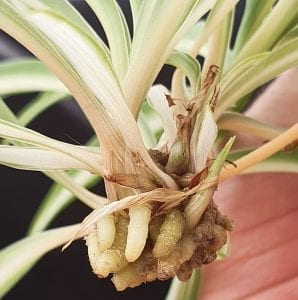
The best way to tell if your spider plant offset is ready to be planted is to check for the presence of new tuberous roots. Spider plant roots develop from a node into a cluster before the plant is even exposed to soil or water.
Although they appear dry and tough to the touch at this early stage this will quickly change as soon as the plant has consistent access to moisture.
It’s worth saying now that there’s no great rush to pot up spider plant plantlets whilst they remain attached to the parent plant.
Separating the plantlets too soon from the parent increases the chance that the young plant won’t be able to support itself during the early stages of growth.
Wait until the roots on the spider plant baby grows to at least 5mm in length before potting it up will allow the plant to adapt to its new surroundings quicker.
Having said the plantlet will begin to develop its root system rapidly as soon as the node comes into contact with a suitable growing medium, so don’t fret over the exact length of the
Our Favorite Spider Plants And Supplies On Etsy
Methods of propagating spider plant babies
1. Pot the plantlet whilst it remains attached to the parent plant
The ideal method is to plant a spider plant baby so that it mimics nature by potting into soil whilst it remains attached to the parent plant. This is the safest and quickest way to ensure that the young plant can grow to the point where it can support itself.
After a few weeks new leaves will begin to appear and at that point the runner stem can be cut to make the plantlet fully independent.
Practically speaking the additional pots and space needed for this method can make it difficult to manage, especially as the parent plant is capable of producing tens of new plantlets at any one given time.
Therefore the easiest and most convenient way to plant a spider plant baby is to remove it from the parent plant and pot it on.
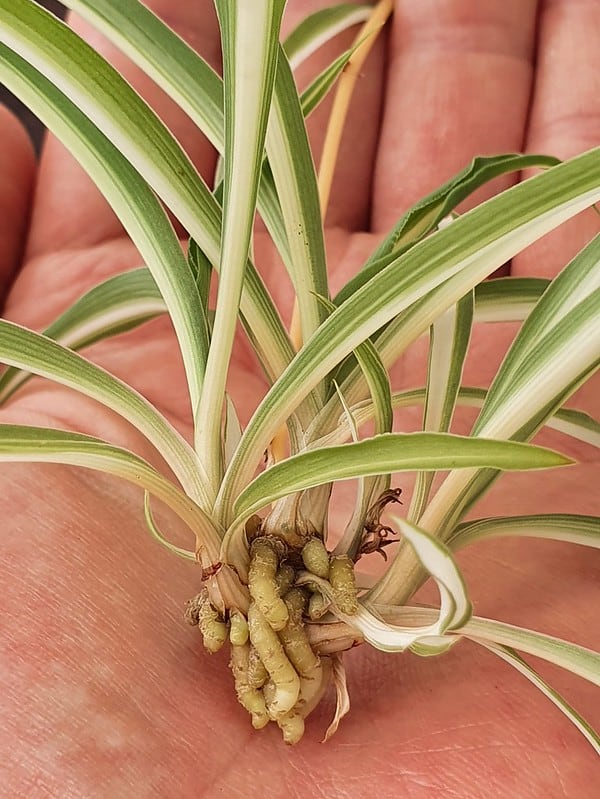
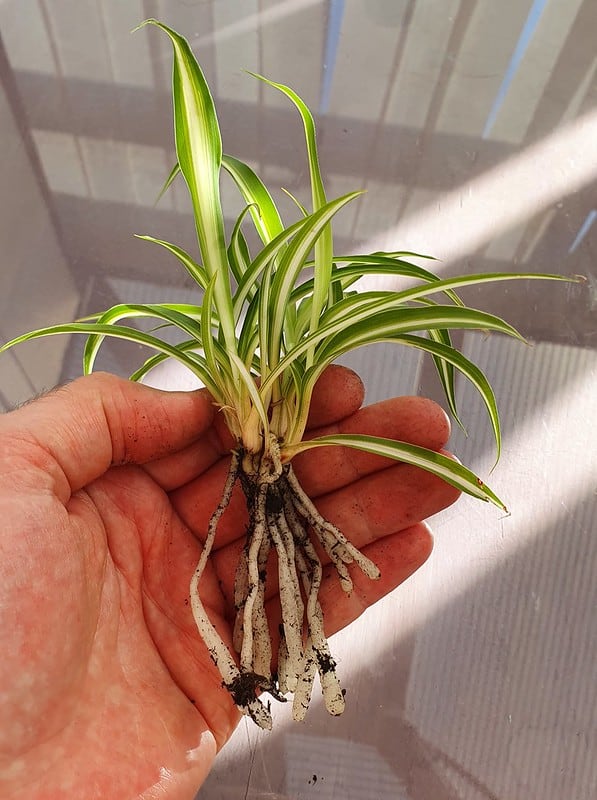
The roots form from a node at the base of the plant whilst the plantlet remains attached to the flower stem.
The roots grow quickly using method 1, this is the same plantlet four weeks after planting in a potting compost.
2. Cut the spiderette from the parent plant and add to compost
As a rough rule, hold off separating any spider plant baby from the parent plant until it is approximately one quarter the size of the adult. This will allow your baby plant to be more robust at adapting to its new growing conditions.
Once of an adequate size, use a clean, sharp knife cut close to the base of the plantlet and pot it straight into compost suitable for houseplants (usually a mix that contains an appropriate balance of water retaining medium, aeration materials and nutrients).
As you won’t be able to see the roots develop you’ll only know the plant has taken successfully when new leaves begin to sprout.
Tip: Be sure to provide ample to indirect light to all newly planted spider plant babies.
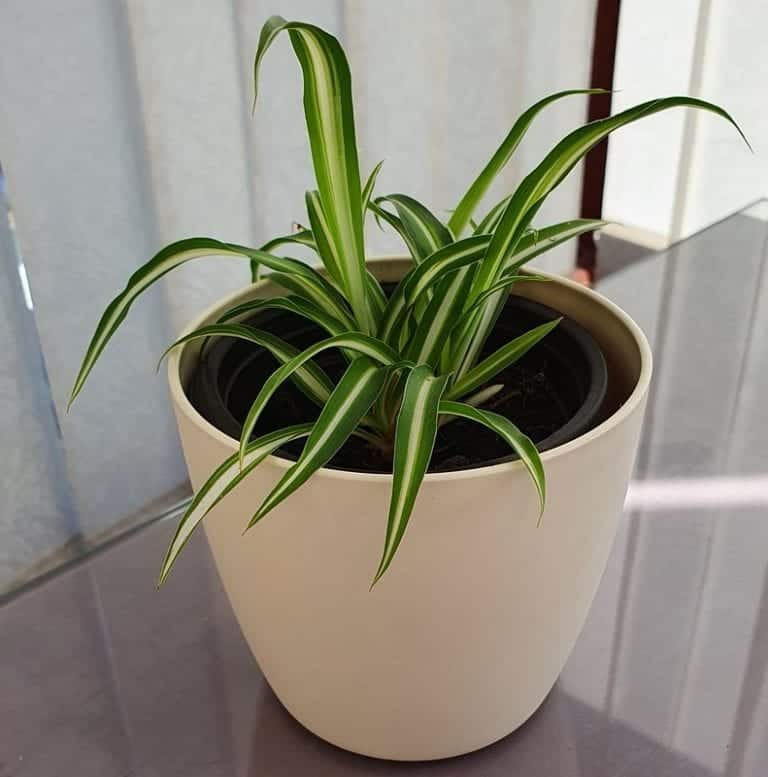
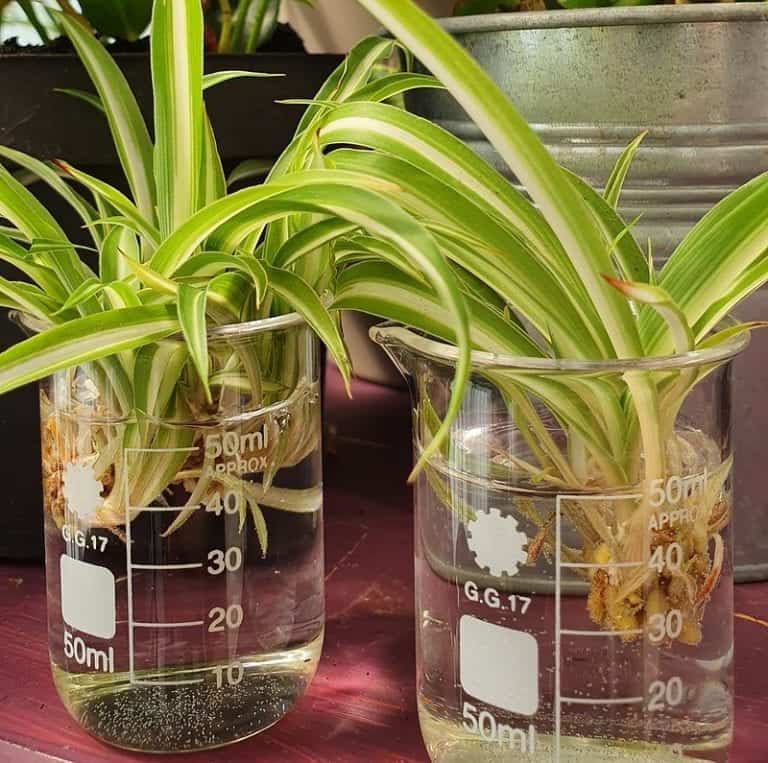
This is a plantlet that has taken successfully to its soil and has started producing new leaves. Note the darker leaf colour in comparison to newly separated spider plant babies.
Rooting spider plant babies in water allows you to keep a close eye on how the roots are developing. Pot them into soil when the roots reach 2 inches in length.
3. Cut from the parent plant and add straight to water
Adding spider plant babies straight to water will allow you to keep a close eye on how the roots develop.
Be mindful though that this is a temporary planting arrangement as eventually the plantlets will require nutrients provided by potting compost to continue growing.
To plant in water simply cut the plantlet from the parent plant and submerge its base below the water surface. Try to use a glass vial that is small enough to stop the whole plant from dropping into the water as submerged leafs will begin to rot.
If it helps, imagine the water level is the top of your soil. You wouldn’t absolutely bury the plantlet when potting up so try not to drown it in water.
Tip: Be sure to change the water every few days to prevent a build up of any algal growth.
FAQs
Spider plants reproduce by generating new plants from flower stems that sprout from the base of the parent plant’s leaves. You’ll know you have a flower stem as it is cylindrical and tinged yellow rather than the broad and flat appearance of leaves.
More than one flower stem can develop at any one time and each is capable of growing multiple offsets. The extra weight of the ever growing youngsters will eventually cause the flower stem to droop over and in the case of houseplants hang over the pot.
If your spider plant hasn’t produced any flower stems yet it could either mean your plant is immature or that it isn’t exactly loving its living conditions. Typically flower stems increase in frequency when your mature spider plant is rootbound in its container.

Chris Dosser
Co-Founder of Eden Indoors
Chris is a self-taught horticulturist with over a decade of experience caring for houseplants and creating lush, thriving indoor oases. He specializes in Monstera, and by self admission has a serious problem with buying and propagating rare indoor plants!
Similar Posts
When Do Spider Plants Have Spider Babies?
Discover when and why spider plants have spider babies and troubleshoot why your plant might not yet have produced offsets.
Should I Cut The Babies Off My Spider Plant?
Will spider plant babies or the mother plant suffer if spiderettes remain attached for too long? Is there any benefit to cutting them off? Answers here.

